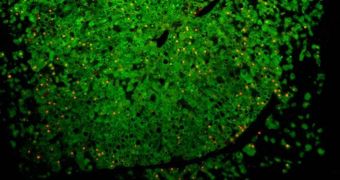Scientists at the Salk Institute for Biological Studies, in La Jolla, California, have recently managed to achieve an impressing goal – the transplantation of a liver from a human to a mouse. They were successful in their quest, which means that human liver cells, which are subjected to the same type of infections our own organs are, could be placed in large numbers of unsuspecting lab mice. The animals could then provide scientists with a new model to study the development of diseases such as hepatitis B and C, and also to determine possible courses of treatments and new drugs for them.
This is a fundamental breakthrough in biology, the researchers say. Most infectious diseases have evolved over the eons to infect their hosts very efficiently, but the drawback to this approach is the fact that they can only infect a very small group of organisms, if not just one. Therefore, thus far, it has been virtually impossible to model hepatic diseases in mice, or rats, seeing how most conditions associated with the liver's degradation or malfunctioning are characteristic to humans. By developing the new approach for research, the Salk team has managed to break new grounds into how we look at biomedical research, experts say.
In order to avoid studying the effects of diseases directly on humans, researchers have employed various approaches to modeling a condition, in either lab animals, primates or petri dishes. However, in the case of liver cell hepatocytes, this has proven to be very difficult to do. “Human hepatocytes are almost impossible to work with as they don't grow and are hard to maintain in culture,” Salk Institute Laboratory of Genetics Professor Inder Verma says. The scientist is also the author of a new study detailing the findings, which appears in the February 22 issue of the respected scientific Journal of Clinical Investigation, LiveScience reports.
“This robust model system opens the door to utilize human hepatocytes for purposes that were previously impossible. This chimeric mouse can be used for drug testing and gene therapy purposes, and in the future, may also be used to study liver cancers,” Verma believes. The expert and the Salk team are not on their first attempt to create a hybrid mouse. Their previous investigations have focused on creating lab rodents with partially human livers. The new work was basically an improvement brought to their previous achievements.

 14 DAY TRIAL //
14 DAY TRIAL //